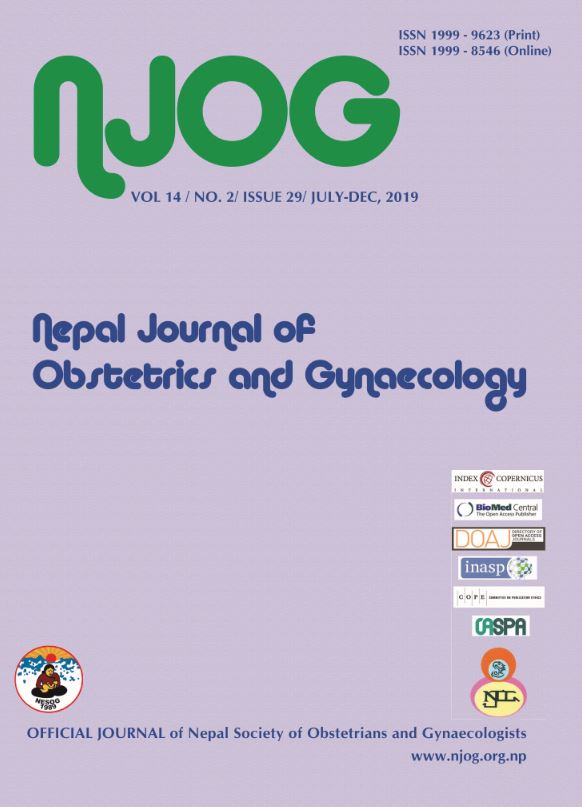Preinduction cervical ripening with vaginal misoprostol in second and third trimester intrauterine fetal demise
Keywords:
cervical ripening, FIGO, IUFD, misoprostolAbstract
Aim: To study the effectiveness of vaginal misoprostol according to the FIGO 2017 guideline for preinduction cervical ripening in second and third trimester pregnancy with intrauterine fetal demise.
Methods: During six months period from October 2017 to April 2018 at Paropakar Maternity and Women's Hospital, Thapathali, Kathmandu, Nepal, cases admitted for second and third trimester termination of pregnancy for fetal demise were studied using the International Federation of Gynaecology and Obstetrics (FIGO) recommended doses of vaginal misoprostol. For gestational age of 13-26 weeks 200µg, for 27-28 weeks dose of 100µg and for >28 weeks dose of 25µg, every 6 hours was used. Main outcome measured included change in modified Bishop Score, insertion of first dose of vaginal misoprostol to delivery interval and maternal side effects.
Results: In this study including 54 cases, mean preinduction Bishop score was 2.12. Bishop score remained unchanged in 2 cases, 28 had score between 4 to 6, 10 cases had score between 7 to 8 and 14 cases had Bishop score more than 8. The change in Bishop Score is statistically significant (p=0.007). 50 cases had vaginal delivery and it occurred within 19.83±13.1 hours. It took minimum 3 hours to maximum 52 hours from the first dose of misoprostol to delivery of the fetus. No side effects were noted within 24 hours of the last dose of vaginal misoprostol.
Conclusions: Vaginal misoprostol according to FIGO guideline 2017 is safe and effective for preinduction cervical ripening in second and third trimester intrauterine fetal demise leading to successful vaginal delivery.
Downloads
Downloads
Published
How to Cite
Issue
Section
License
Copyright on any research article in the Nepal Journal of Obstetrics and Gynaecology is retained by the author(s).
The authors grant the Nepal Journal of Obstetrics and Gynaecology a license to publish the article and identify itself as the original publisher.
Articles in the Nepal Journal of Obstetrics and Gynaecology are Open Access articles published under the Creative Commons CC BY-NC License (https://creativecommons.org/licenses/by-nc/4.0/)
This license permits use, distribution and reproduction in any medium, provided the original work is properly cited, and it is not used for commercial purposes.



